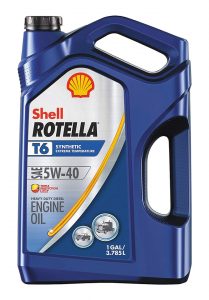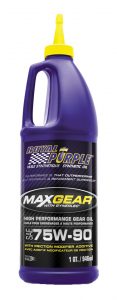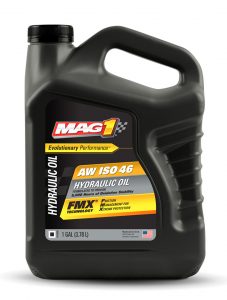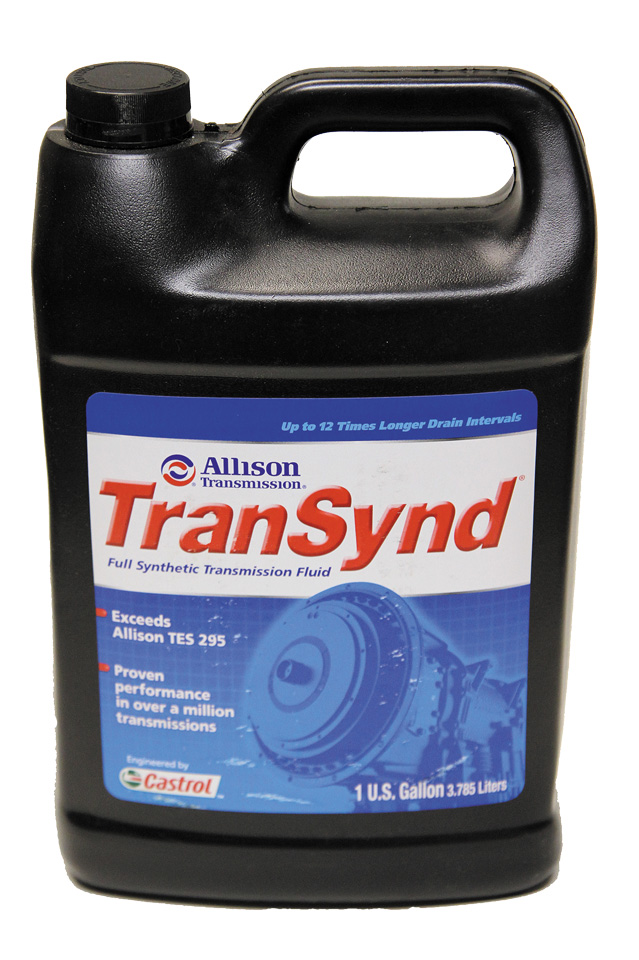A guide to various products designed to keep moving parts operating smoothly.
By Mark Quasius, F333630
May 2022
If you want to keep your RV in good operating condition and ensure trouble-free travel, you must perform regular maintenance, and that includes taking care of lubrication requirements. Lubricants play a vital role in motorized RVs. Without proper lubrication, moving parts will seize up and stop moving. Lubricants don’t last forever, though. They need to be topped off and replenished.
The first thing that comes to mind when talking about lubrication probably is engine oil — the lifeblood for operation. It lubricates your engine and protects it against corrosion. Many other points of lubrication exist as well. And there is no one-size-fits-all lubricant, so it is important to select the correct lubricant for each component according to the chassis manufacturer’s recommendations.
Ratings
The Society of Automotive Engineers (SAE) uses a standardized numerical rating system to grade lubricant viscosity, which is another term for thickness. Viscosity also denotes the ability of the oil to flow at a given temperature. As an oil’s temperature rises, it thins, flows faster, and doesn’t provide the same level of lubrication as a thicker oil. Engines are designed to utilize a specific viscosity for any given set of operating conditions, largely dependent on the ambient temperature in which they are operating. Your owners manual should have a chart specifying the correct viscosity for your environment.
The American Petroleum Institute (API) rates different lubricant blends based on chemical makeup and additives. Lubricating oils are either mineral-based or synthetic. Petroleum-based lubrication oils typically consist of around 80 percent to 90 percent petroleum hydrocarbon distillates; the rest are additives — usually viscosity modifiers, dispersants, antifoam detergents, antioxidants, antiwear agents, and rust and corrosion inhibitors. The API rating specifies a minimum level of these additives, because oils may have more than one performance level.
Both SAE and API ratings are marked on every container. Consult the vehicle’s owners manual for the minimum API rating specified for your engine. You can exceed the API ratings and use a better grade oil, but never drop below the minimum API rating.
Viscosity
The thicker the lubricant, the higher the viscosity number. For example, SAE 40 oil will be thicker than SAE 30 oil, while SAE 10 is significantly thinner. This viscosity number defines the ability of the oil to flow through the engine. If the oil is too thick, it will not flow fast enough to provide lubrication for the critical components that it is supposed to protect.
SAE ratings reflect the ability of the oil to flow at 210 degrees Fahrenheit and can be useful for determining how that oil will perform in the summer, but it does not consider the low-temperature performance of the oil, reflecting winter use. A second test is taken at 0 degrees Fahrenheit to rate an oil designed for winter use, and these ratings incorporate a “W.” For example, a 10W oil is thinner than a 20W oil, but both are designed for winter use. However, the lighter 10W oil will flow better in colder temperatures.
Most of an engine’s wear and tear occurs during startup. The engine is still cold, and the pistons have not yet expanded to their operating tolerances. While idle, there is not much of a protective film on crankshafts, camshafts, rocker arms, etc. due to lack of oil pressure. Once the engine starts, oil begins to flow, but by the time it is pumped to all the critical areas, the engine has been running for a few seconds — this is when most of the wear occurs. Using a lower-viscosity oil helps in that regard, because the oil pressure rises faster than it does with a thicker oil. However, once the engine is working under a heavy load, this oil becomes too thin and does not provide adequate lubrication.
Fortunately, multiviscosity oils are designed to correct issues common to single-viscosity oils. A multiviscosity oil has two ratings; for example, a 10W-30 oil has the cold-temperature performance of a 10W winter oil yet retains the high-temperature performance of SAE 30 summer oil when the engine reaches its operating temperature. This gives you the best of both worlds and does a better job of protecting your engine at both startup and under load.
 Engine Oil API Ratings
Engine Oil API Ratings
The owners manual for your engine will detail the minimum API oil rating that should be used. Gasoline engines use the “S” series of ratings, while diesel engines use the “C” series.
Diesel engines will have an API service classification such as CJ-4. The “C” means commercial, or to make it easier to remember, relate it to “compression ignition.” So, every oil designed for use in heavy-duty diesel engines will begin with a “C.” The following letter, which in this example is “J,” designates the latest specification. The letter will increase whenever a new specification is released. For example, an API CJ-4 spec will be a higher-quality oil than an API CI-4 and can be used wherever an API CI-4 oil is specified. The “4” at the end designates that the oil is designed for a four-stroke engine. You can always use a higher letter than what your engine’s specifications require, because that specification is a minimum requirement, and it never hurts to go with a better oil.
Gasoline engines have different requirements for lubricating oils than diesels. The API service classifications begin with an “S” followed by a second letter. The “S” stands for “spark ignition,” while the second letter designates the service classification. As with oils designed for diesel engines, higher letters designate better oil. As a result, an API service classification of “SM” is better than an API service classification of “SJ.” As stated before, you can always exceed the minimum required service classification for your engine; just never go below that specification.
The CJ-4 rating mentioned above first appeared in 2007 and was designed for the EPA-2007 engines that started appearing in 2008-model motorhomes. Diesel engines meeting the new EPA-2007 emission standards required ultra-low-sulfur diesel (ULSD) fuel because of the diesel particulate filters (DPF) that were added to the emissions controls. The DPF was susceptible to fouling by any contaminants, such as sulfur, and required ULSD fuel with less than 500 ppm of sulfur. And previous API- grade oils contained levels of zinc as an antiwear additive, but the DPF was also fouled by levels of zinc that would be present in the exhaust. Thus, a new motor oil was designed for use with these engines — the API CJ-4 specification. The zinc was removed from the oil and replaced with other antiwear compounds that would not leave any ash content in the DPF.
The next evolution in diesel motor oils was the API CK-4 specification that debuted in 2016. These proposed category-11 oils enabled better protection for the newest EPA-2010 engines, which were more fuel efficient and ran at hotter temperatures. These oils offer better protection against elevated temperatures while still providing adequate protection with an increase in fuel economy. They also provide a higher level of protection in older diesel engines.
Synthetic Lubricants
Conventional motor oil is a lubricant derived from crude oil — a product of dead dinosaurs. Because fossil fuels are a naturally found material, conventional oil is inconsistent in the size of its molecules and contains impurities such as sulfur, wax, and asphalt. Synthetic lubricant, while it may have a petroleum base, is created from scratch in controlled laboratory conditions to eliminate any inconsistencies in molecule sizing. It can be fine-tuned to have about any properties that the chemist chooses to incorporate. Synthetic oil has a lower pour point (the temperature at which it loses its flow characteristics) than conventional oil, which improves cold-weather performance without diminishing high-end capability. It is common to find a 5W-40 synthetic oil that can replace a conventional 15W-40 oil.
When exposed to high enough temperatures, all oils eventually will boil and begin to vaporize. This vapor will harden into carbon deposits once it hits hot spots within the engine. One susceptible area is immediately above the top piston ring, where carbon buildup accelerates wear on the cylinder wall. Another area is the turbocharger oil galleries, where oil can oxidize and produce solid residue — also known as “coke” — that plugs critical passages. Restricted flow can lead to premature turbocharger failure. Conventional oil tends to break down at about 250 degrees Fahrenheit, but synthetics are good to at least 300 degrees Fahrenheit, which minimizes coking and increases the life of the turbocharger.
Some lubricant manufacturers claim that you can extend your service intervals using synthetics when compared to conventional oil, but not every engine manufacturer allows this. You may not be able to do this without voiding the engine’s warranty.
Synthetic oil generally costs more than conventional oil. For motorhome owners who typically change their oil based on time intervals rather than mileage, the money saved by extending those intervals, if allowed, may or may not apply. However, synthetic oil offers better engine protection. Synthetics, because of their lower pour point, are advantageous in cold starts and cold-weather operation. And the higher boiling point of synthetic oil offers additional protection when the engine is working especially hard.
 Automatic Transmission Fluids
Automatic Transmission Fluids
Engine oil lubricates moving parts such as bearing surfaces that are under compression; its detergent and additive packages help to clean the engine and trap combustion deposits, among other moving surfaces. Automatic transmission fluid (ATF), on the other hand, is designed to lubricate fast-turning shafts and clutch packs to transfer power through a complex system of servos, pumps, and fluid couplings. ATF is the primary method of cooling the transmission. SAE viscosity and API ratings do not apply here, so a different rating system is used.
If you have a Type B or C motorhome, it likely has a Ford, Chevrolet, or Mercedes-Benz transmission. Ford and Chevy transmissions use Mercon or Dexron ATF, respectively. Coaches built on the Mercedes-Benz Sprinter chassis use the MB 236.x series of transmission fluids, such as Shell’s 134 MB 236.14. TranSynd, a synthetic ATF manufactured by Castrol for Allison Transmission, is rated as meeting the MB 236.91 specification.
Most Type A motorhomes with diesel engines are equipped with Allison automatic transmissions. Allisons can be filled with the same Dexron ATF that you run in your Chevy pickup truck, but it is highly recommended that synthetic ATF be used. In fact, during the 2004 model year, both Freightliner and Spartan began shipping their chassis prefilled with Allison’s synthetic TranSynd fluid. So, for the most part, Dexron is rarely used any more. Synthetic fluid benefits transmissions and raises the temperature at which fluid will burn during hard use. It also increases the time between service intervals compared to nonsynthetics that do not meet Allison’s TES-295 specification. Allison provides charts showing the correct service interval for both types of fluid.
One big question Allison owners have is whether they need to find Allison’s TranSynd synthetic transmission fluid or if another brand could suffice. Allison has done extensive testing with other syn-thetic fluids and has published a TES-295 specification to identify which brands are compatible with Allison transmissions. Any ATF that is approved by Allison will
qualify for the extended service intervals identified in the company’s service schedules.
While TES-295 continues to meet Allison’s specs, newer TES-668 fluids have been introduced. They include an updated additive package and offer a bit better performance. They can be used in place of TES-295. For a list of Allison’s approved fluids, visit www.allisontransmission.com/parts-service/approved-fluids/on-highway-fluids.
Gear Lubes
Gear lubricants are applied to high-load areas that experience high friction during motion, such as rear axle gears and wheel bearings. Gear lube is heavier than motor oil to support those loads, and its viscosity ranges from SAE 75 to SAE 140. It is used to provide adequate protection under high operating temperatures and loads.
Gear lube applications generally fall into one of two categories: standard duty or extreme duty. Most situations require basic 80W-90 gear lube, which is used on wheel bearings, gear cases, and rear axle ring and pinion gear sets.
Limited-slip differentials, used in some automotive applications, add a bit of complexity to the lubricant requirement.
Limited-slip differentials utilize clutch plates to tie both wheels together for improved traction while allowing the plates to slip when turning corners. In some cases, the gear lube must have an additive; otherwise, a gear lube specially designed to work in such applications must be used. If a vehicle is equipped with a limited-slip differential, check the owners manual to determine the requirements. Gear lube designed for limited-slip applications also can be used in standard open differentials.
Sometimes the load is greater, or the conditions are more extreme, so the manufacturer has determined that greater protection is required. In that case, a heavier gear lube such as SAE 140 will be specified. SAE 140 gear lube is quite thick and does not flow well or provide good protection in cold temperatures, so this is the ideal location for a synthetic multigrade gear lube.
Many synthetic gear lubes are available with an SAE 75W-140 viscosity rating. This multiviscosity gear lube flows well in low temperatures yet still functions when things get hot. A synthetic 75W-140 gear lube provides the best protection for any axle or gearbox, such as a cooling fan jackshaft. Synthetics are also less prone to foaming than conventional gear lubes, allowing for more efficient lubrication. The chart above illustrates typical low temperature (pour point) and high temperature (flash point) properties of these gear lubes, showing how synthetic gear lubes flow much better in low temperatures but also hold up better at higher temperatures.
 Hydraulic Oil
Hydraulic Oil
In diesel pushers, hydraulic oil often is used in power steering units and any hydraulic fan motors, which are commonly found on motorhomes equipped with a side radiator and a hydraulic fan drive. The motor and the power steering system are driven by a hydraulic pump that is mounted on the engine and fed by a hydraulic oil reservoir. Hydraulic oil needs to be clean and nonfoaming to provide adequate protection for the components in the hydraulic system and to transfer power from the pump to the motor.
Hydraulic oil generally is either an AW32 or AW46 formula. The AW stands for “antiwear” and is used strictly for hydraulic oil. The 32 and 46 represent the weight of the oil; higher numbers indicate a heavier oil. AW46 is the one most frequently used in motorhome applications. Keeping hydraulic oil cool and free from moisture or dirt is critical, so filter and fluid changes are part of a routine service schedule.
Chassis Grease
The main purpose of grease is to provide a boundary layer between two metal surfaces to prevent metal-to-metal contact and premature wear. Not all greases are alike — there is a wide range to choose from, with differences between various formulations and their applications. Not every component has the same lubrication requirements, so the ideal grease will not be the same in every situation. Matching the correct grease to the application will increase the longevity of those components.
Grease classification is much simpler than that of motor oil and liquid lubricant. Grease viscosity is referred to by its National Lubricating Grease Institute (NLGI) rating. The most popular chassis grease is an NLGI 2 and can be found at most auto parts stores. A grease with an NLGI 1 rating is thinner and will flow at a lower temperature. This is the stuff you would want in your equipment while working at the Alaska pipeline, but NLGI 2 works for 90 percent of automotive applications. Conversely, NLGI 3 is a stiff grease and is used in conditions where extreme heat is encountered; this has no real application in the RV industry.
 Grease is a mixture of three components: lubricating fluid, performance-enhancing additives, and thickener. The lubricating fluid makes up most of the grease formulation and can be petroleum-based oil, vegetable oil, or any synthetic. The additives typically make up a small portion of the total product. The thickener is what separates grease from oil (or other liquid lubricants) and makes the product semisolid rather than liquid.
Grease is a mixture of three components: lubricating fluid, performance-enhancing additives, and thickener. The lubricating fluid makes up most of the grease formulation and can be petroleum-based oil, vegetable oil, or any synthetic. The additives typically make up a small portion of the total product. The thickener is what separates grease from oil (or other liquid lubricants) and makes the product semisolid rather than liquid.
Plain lithium grease works well for wheel bearings but is marginal for driveshaft universal joints and front-end components. These components do not use rotating rollers within bearing races but rely on a thin layer of grease to separate two metal surfaces so that they do not gall and bind. If enough force is applied to these two surfaces, the grease can compress and squeeze out from between them, allowing metal-to-metal contact and increased wear. In addition, when surfaces pull apart from each other, the grease film can fall away instead of sticking to the surfaces. Fortunately, advanced lithium greases have additives that improve upon basic lithium grease. They cost a bit more but are well worth it.
These advanced greases improve the tackiness. For example, if you place a small wad of lithium grease between your thumb and index finger and squeeze, much of the grease will ooze out and leave a thin layer. When you pull your fingers apart, the grease breaks free and leaves a slight film on your fingertips. Each time you squeeze and release, you lose more of the lubricant, and eventually none will be left.
If you were to place some of the advanced lithium grease between your fingers and do the same test, you would find that the grease tends to stick to your fingertips, and it is harder to pull them apart. When you do pull them apart, the grease stretches like strings. One popular grease with this characteristic is Lucas Oil’s Red “N” Tacky grease. This “tacky” version does a better job of staying in place than less expensive lithium grease.
When two metal surfaces are being forced together, which is typical of a ball joint or tie-rod end, the grease tends to squish out from between the surfaces. If you could keep these two surfaces from impacting each other, the grease film would remain in place and your components would experience less wear. That’s where moly grease comes in. It typically contains 5 percent molybdenum disulfide, an inorganic compound that consists of small, round particles that act like miniature ball bearings. They do not crush under pressure and will not scratch or damage metal surfaces. The moly particles prevent metal-to-metal contact and allow the grease to filter in and around them to cool and lubricate components.
Moly grease is messy but excellent for front-end work and universal joints. Moly grease is not recommended for wheel bearings, however, because the moly particles tend to force the rollers away from the races, tightening the bearing clearance and increasing heat. For wheel bearings, it is best to go with a more fibrous general-purpose or tacky grease. Grease that is designed for use in wheel bearings will meet the NLGI GC-LB or SAE J310 specifications.
Synthetic greases are available through many lubricant suppliers. Synthetics offer a greater temperature range than conventional greases and are great for extreme conditions, but most RV owners will not realize those benefits, because they do not encounter extreme conditions.
My favorite grease to use is lithium grease with moly, which has excellent tacky properties. Examples include Schaeffer’s 221 Moly Ultra, Shell Gadus S3 V460D 2, Mobil Centaur Moly, and Valvoline Palladium grease. They resist water penetration, hold up well to heat, stay in place, and resist shock loads. I have been using this type of grease for a long time in numerous vehicles. The longevity they add to my motorhome’s universal joint and front-end components is remarkable. While not as strong as moly, a number of nonmoly greases with improved load-carrying capacity are available. Such greases carry the EP label, which stands for extreme pressure.
You should not use moly grease when lubricating automatic slack adjusters, a component of air drum brakes. Slack adjusters are designed to self-adjust as you use them, and for the self-adjusting feature to work properly, there needs to be friction. Moly grease makes them too slippery. Your best bet is to buy a tube of inexpensive grease and keep that loaded in a second grease gun that is used strictly for lubricating the slack adjusters on drum brakes. This does not apply to disc air brakes, only drum brakes with self-adjusting slack adjusters.
Check The Manual
A proper maintenance cycle for your motorhome revolves around following the recommended service schedule and matching every component with the correct lubricant. Your owners manual will detail the minimum requirements, but keep in mind that exceeding those specs with a higher-quality lubricant will generally yield greater longevity. Taking proper care of your coach will deliver trouble-free operation and save you money in the long run.
——————————————————————————————————————————–
Allison Transmission Approved Product Listing
| TES-295 Approval Number | Approved Marketer | Product Brand Name |
| AN-011001 | Castrol Heavy Duty Lubricants | TranSynd |
| AN-031002 | BP Lubricants | Autran Syn 295 |
| AN-031003 | Cognis Corporation | Emgard 2805 |
| AN-031004 | International Truck & Engine | Fleetrite Synthetic ATF |
| AN-051005 | ExxonMobil Lubricants | Mobil Delvac Synthetic ATF |
——————————————————————————————————————————–
Gear Lube Chart
| Viscosity Rating | Pour Point Temperature | Flash Point Temperature |
| 80W-90 Conventional | -17° F | 208° F |
| 75W-90 Synthetic | -60° F | 347° F |
| 75W-140 Synthetic | -60° F | 390° F |
The chart illustrates the low temperature (pour point) and high temperature (flash point) of these gear lubes. As the chart indicates, synthetic gear lubes flow much better in colder temperatures but also hold up better at high temperatures.
——————————————————————————————————————————–
Resources
Allison Transmission
(317) 242-5000
www.allisontransmission.com
Kendall
(877) 445-9198
www.kendallmotoroil.com
Lucas Oil
(800) 342-2512
www.lucasoil.com
Mobil Oil
(800) 275-6624
www.mobiloil.com
Royal Purple
(888) 382-6300
www.royalpurpleconsumer.com
Schaeffer Manufacturing Co.
(800) 325-9962
www.schaefferoil.com
Shell Lubricants
(800) 237-8645
www.shell.us
Valvoline
(800) 832-6825
www.valvoline.com

